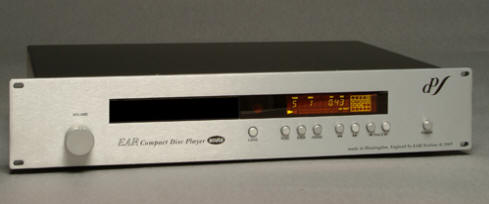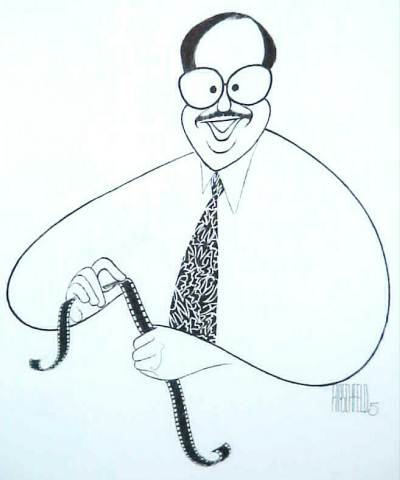
You are reading the older HTML site
Positive Feedback
ISSUE
27
e.a.r.
Acute CD player
as reviewed by Robert H. Levi

|
Lightning can strike twice in the same place! Having just enjoyed the fabulous solid-state Metronome T2i Signature CD player ($20,600), I now have a vacuum tube competitor on hand—the E.A.R. Acute ($5500 - $5700 depending on finish) by the brilliant Tim de Paravicini. Both are wonderful CD players, and both have been bolts from the blue. Don't be shocked by the price difference. It appears that the digital demon is more difficult to tame with solid-state circuitry than it is with a tube circuit. There's more to this story than the use of tubes, of course, but truly great solid-state CD sound costs substantially more than $10,000 these days.
The Acute is a one-box CD player that has analog sound in its heart and ultra-high definition in its soul. The Acute is at the very top of the heap of today's ultimate CD playback gear. I know that it is this great because I prefer the sound of the CD layers of hybrid SACDs on the Acute to the sound of the SACD layers played on my best SACD player. This is only the second time this has happened, but the good news is that the Acute costs only one quarter as much as the last machine that did it.
The Acute starts out as an Arcam unit, with the wonderful Wolfson DACs. E.A.R. adds a volume control, and disconnects all the circuitry save the DACs and the transport. All of the new innards are E.A.R. custom goodies, including analog filtering, transformer coupling in and out, a much bigger power supply, and a two-tube output stage featuring 7DJ8s or the equivalent (any 6DJ8 type will work). The circuit is transformer-balanced, and provides single-ended and balanced outputs, digital outputs, and a very flexible remote control. The output circuit is similar to that of the stellar E.A.R. 912 preamp, which allows the unit to be connected directly to amplifiers. The volume control should be set at 2 o'clock if you use it with a preamp, as I did. The Acute is a full-time 24/192 upsampler, for which the Wolfson DACs are famous. Everyone has heard of the custom de Paravicini modifications to tape recorders and other such gear. Well, now you can own a modified, full production CD player with Tim de Paravicini's transformers, circuitry, and other touches.
I recommend the Kubala-Sosna Emotion interconnects and power cords for best performance, as well as the use of an isolation platform (I used a Townshend Seismic Sink). The improvements wrought by a good platform are not subtle. Regarding tubes, I listened quite contentedly to the player with the stock tubes until I changed my system and found that I preferred a pair of NOS Ediswans that I got from Kevin Deal at Upscale Audio. They (and a pair of NOS Mullards that I tried) retained the textural cues of the stock tubes while providing slightly more definition, and better performance at the frequency extremes. Most listeners will be quite happy with the provided tubes, which are excellent.
The Acute sounds thrilling and alive. Images are unusually life-like and focused for digital. In fact, only a top-notch phono front end will beat the Acute. With a noise floor as low as a tube circuit can go, the Acute creates an intimate, involving, organic sound that envelops the listener. One audiophile friend who heard the player said he felt it made him part of the soundstage. He noted the lifelike sound and the precise, yet etchless vocal reproduction. Another golden-eared friend commented that the depth went on forever. Another said that the highs were delicate, almost like smoke. Yet another loved the cymbals and triangles, commenting that they seemed to be present in the room. What is truly amazing is that all this musical wonderment came when playing good old Redbook CDs. This is the magic of the E.A.R. Acute.
I've always thought that great audio gear was a direct result of the taste level of the designer. Tim de Paravicini is known for his expertise as a recording producer, maker of the world's finest transformers, and the author of numerous amplifiers and other components that are considered timeless sonic heirlooms. This superb taste for real music has been poured into every piece of equipment that de Paravicini has made or modified. Now, at last, he's addressed digital reproduction, and frankly, it's about time!
The highs are extraordinary for digital—extended, accurate, delicate, and oh so musical. The high band is unsurpassed by any tubed digital source I've heard, and may be superior to the best solid-state digital sources, at any price. The combination of a great tube circuit and superior transformers is unbeatable. If this technology were ever applied to SACD or DVD-A, it would be unbelievable… but enough wishful thinking. It took Tim de Paravicini twenty years to apply his art to CD, so why imagine more? If you don't own a great phono setup right now, try an Acute and move on with your life.
The mids are more realistic, warmer, and fleshier than the best solid-state digital reproduction, at any price. The Acute has a superbly detailed, nuanced midband. The best solid-state is just as smooth and detailed, but less texturally accurate, and less involving. The Acute is intimate and colorful, while top solid-state is more snappy, yet more detached and bland. The Acute is swaggering and powerful. The best solid-state seems to have louder crescendos, but also has a slight thinness and two-dimensionality. The best solid-state digital I've heard simply sounds less organic and involving. The lower noise floor of the best solid-state machines does create a spaciousness between images that is quite attractive, and a great sense of depth. The Acute emphasizes the individual images, and spotlights the overall soundstage, but it is a bit darker, with less sparkle. However, the E.A.R. player's ambience retrieval is very you-are-there realistic, and it is never truncated or damped in any way. It's a matter of taste (and financial wherewithal) whether you will prefer a solid-state player. Figure $20,000 for a two-box unit that is this refined.
The Acute's bass is excellent, maybe the best tube-powered CD bass I've heard. It is a bit less tight than the famous ModWright tube designs, but more textured. The best solid-state digital bass is even better—the Acute's bass is somewhat slower and less explosive than that of, say, the Metronome, which is extraordinary. The Acute's bass does blend beautifully with its mids and highs, and it is very, very deep. It drove my subwoofer well on organ music and bass fiddle.
With a new generation of one-and two-box upsamplers upon us, CD playback has seen a rebirth of sorts. CDs from companies like Telarc, Chesky, Reference Recordings, and the like sound better than ever on the new generation of players. My SACD player has seen some disuse recently, thanks to the Acute. Reasonably priced considering its extraordinary performance, the E.A.R. Acute is a wondrous value for those who love music. I have lost count of the CDs I own, and would like to continue to enjoy them. The E.A.R. Acute CD player offers this golden opportunity right now, and is most highly recommended. I bought the review sample, and it is now my CD player reference. Robert H. Levi
Discs used in this review included:
-
Joe McQueen and Friends (Kimber Isomike SACD 55802)
-
The Turtle Creek Chorale, Testament (Reference Recordings RR49CD)
-
Symphonic Dances (Reference Recordings RR105)
-
Tchaikovsky, Trio for Piano, Violin, and Violoncello in A minor (Mirrored Nature MNR 5001)
-
The Carl Saunders Sextet (BluePort BP-J011)
-
Gene Harris, The Best of the Concord Years (Concord Records 4930-2)
-
Hovhaness, Symphony 22/Cello Concerto (Naxos 8.559158)
-
Jacintha, Here's to Ben (Groove Note 1001-3)
-
Chopin, Piano Concertos 1&2, Rubinstein (RCA/BMG 82876-67902-2)
-
Piatigorsky/Dvorak, Cello Concertos (RCA/BMG 82876-66375-2)
-
Suppe, Overtures (Mercury Living Presence 470-638-2)
-
Hovhaness, Mysterious Mountain (Telarc 60604)
-
Eric Darius, Just Getting Started (EMI/Narada 724386055620)
-
Miles Davis, Kind of Blue (Columbia 90887)
-
Turtle Island String Quartet (Telarc 60630)
-
The Absolute Sound SACD Sampler (Telarc 60011)
-
Howard Hanson, Symphony No.2 (Telarc 60649)
-
Stravinsky, Firebird Suite, Jarvi (Telarc 60587)
-
SuperBass2 (Telarc 63483)
-
Orff, Carmina Buran (Telarc 60575)
-
Diana Krall, Love Scenes (Impulse 2841-35)
-
A Song for You (FIM 036)
-
Duke Ellington, Blues in Orbit (Mobile Fidelity 757)
-
Isomike Sampler (Kimber 2005A)
-
Chick Corea, Rendezvous in NY (Stretch 9041-2)
-
Saint-Saens, Piano Concertos Vol. 1 (Audite 92.509)
-
Schumann/Lalo/Saint-Saens, Cello Concertos, Starker (Mercury 4756621)
-
Berlioz, Symphony Fantastique, Paray, Detroit Symphony (Mercury 4756622)
-
Tchaikovsky, The Nutcracker, Dorati, London Symphony (Mercury 4756623)
-
Gershwin, An American in Paris, Dorati (Mercury 4343292)
Acute CD player
Retail: $5500
E.A.R. Yoshino
web address:
www.ear-yoshino.com
E.A.R. USA
web address: www.ear-usa.com

